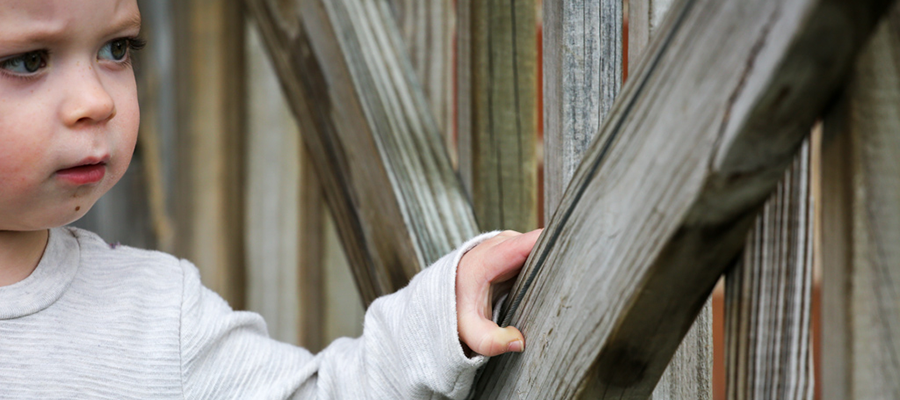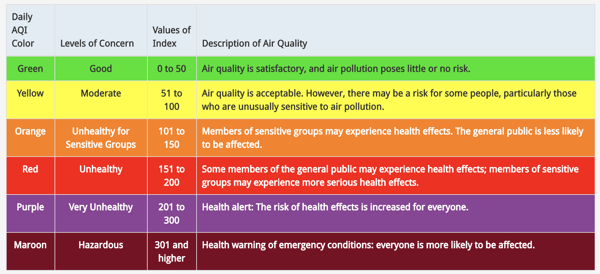
Why does outdoor air quality matter?
Child care providers are always thinking about the health and safety of the children in their care. One critical issue to be aware of is the outdoor air quality in your area. Outdoor air quality issues can affect a child care program, including the ability to safely take children outside to play every day.
Outdoor air quality can be impacted by many things, including emissions from vehicles, industry pollution and smoke from fires. It is especially important to think about air quality during wildfire season. Wildfire smoke can include chemicals from materials that have burned. Smoke can travel hundreds of miles so child care providers should watch local air quality reports during wildfire season, even if there is no fire nearby.
Poor air quality can affect health. According to the United States Environmental Protection Agency (EPA), children are more likely to be impacted by contaminated air because they breathe in more oxygen relative to their weight than adults. Children must also be protected from poor-quality air because their lungs are still growing and, according to the American Lung Association, air pollution can limit lung growth.
What are the health effects of poor air quality?
Children are at a greater risk from air pollution. The American Lung Association describes ways that children can be affected by poor air quality.
- Children can be more active, so they breathe in more air – and air pollution.
- Children have a greater risk of infection, coughing and bronchitis from air pollution.
- Breathing high levels of air pollution while growing up can affect how children’s lungs develop, which can lead to a greater chance of lung disease as they age.
According to the EPA and the Mayo Clinic, outdoor air pollution can be associated with many health issues, including:
- Headaches
- Irritation of the eyes, nose and throat
- Asthma attacks
- Bronchitis
- Respiratory symptoms
- Hospital and emergency room visits
How can I monitor outdoor air quality?
The U.S. Air Quality Index (AQI) is a tool that indicates air quality levels. The higher the AQI value, the greater the amount of air pollution and the greater the risk of health concerns.
The EPA and Partners offer an interactive air quality tool that reports the previous day’s air quality and offers an air quality forecast for a particular geographic area. Child care providers can use the forecasts to help plan outdoor activities for the day.
Many phone weather apps report outdoor air quality in addition to weather conditions. There are also apps specifically designed to check outdoor air quality, such as the AirNow Mobile App.
Airnow.gov offers air quality and outdoor activity guidance for schools. This information can be used by child care providers to decide when and how to modify outdoor physical activity based on the AQI.
What can I do to protect children from poor air quality during wildfires?
The American Lung Association offers some general recommendations to help avoid breathing and exposure to wildfire smoke. Many of these recommendations can be used by child care providers to help keep children safe during a wildfire.
- Stay indoors, unless prompted by local officials to evacuate.
- Do not rely on a dust mask to filter out the smaller particles in wildfire smoke.
- Take extra precautions for children because they are more susceptible to smoke.
- Protect the air inside.
- Keep doors and windows closed.
- Use air conditioners on the recirculation setting.
- Use an air cleaning device with a HEPA filter.
- Place damp towels under the doors and other places where outside air may leak in.
- Do not exercise outdoors, especially if you smell smoke or notice eye or throat irritation.
Other Resources
- Wildfires (CCAoA Emergency Preparedness, Response, and Recovery)
- Wildfire Smoke and COVID-19 (CDC)
- Children and Air Pollution (American Lung Association)
- Emergencies & Natural Disasters (American Lung Association)
- Air Quality Index Kids Website Teacher’s Reference (EPA)
- Guidance Related to Childcare During COVID-19 (AAP)
![ECCTAC-Logo[1]-1](https://info.childcareaware.org/hs-fs/hubfs/Rich%20Text%20Pasting/unknown-1595431381223.png?width=299&name=unknown-1595431381223.png)






